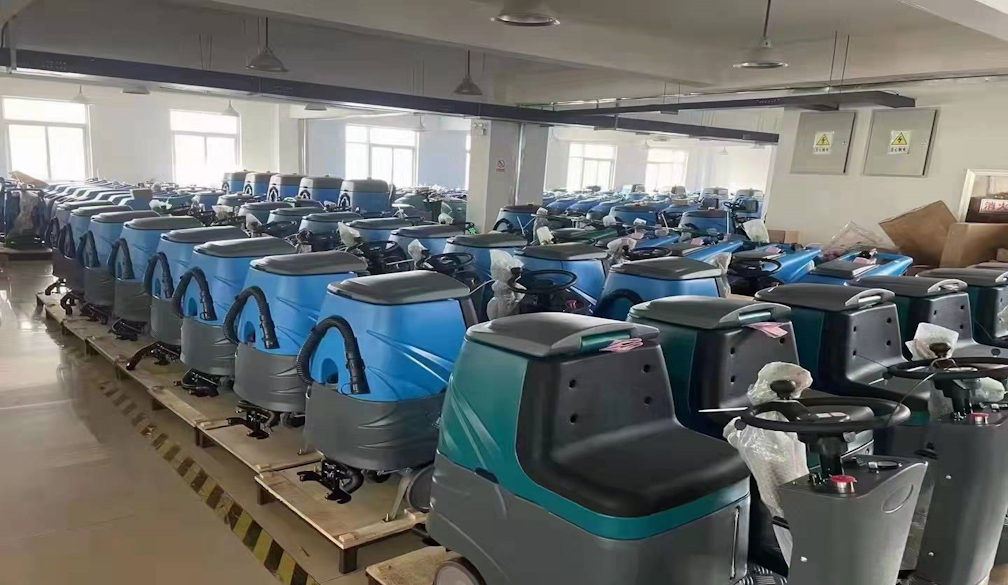The Ergonomics of Ride-On Sweeper Operation: Operator Comfort

Large warehouses, parking lots, and industrial buildings are now easier to clean thanks to ride-on sweepers, which have transformed industrial and commercial cleaning. The cleaning industry has changed thanks to these robust machines, which also increase output and quality. It is critical to underline the necessity of improving usefulness as well as the comfort and safety of the operators who spend long hours operating these mechanical marvels when honouring these exceptional innovations. The relevance of ergonomics in the design and use of ride-on sweepers is examined in this study with an emphasis on the comfort of the operator.
Grasping the Significance of Ergonomics
The scientific field of ergonomics, often accurately known as human factors engineering, is devoted to creating tools and work places in a way that flawlessly optimizes how people interact with machinery. In the context of ride-on sweepers, ergonomics plays a crucial role in preserving the physical and mental health of operators as well as enhancing their productivity. An intelligently built sweeper must be set up to harmoniously meet the diverse requirements of operators, from reducing fatigue to reducing the risk of injury. To do this, a thorough analysis of the ergonomic factors that affect ride-on sweeper operation is necessary.
Seat Design and Comfort
Their main engagement during sweeping is at the operator's seat. A comfortable, adjustable seat with proper lumbar support reduces the detrimental consequences of prolonged operation. A good seat absorbs machine vibrations and reduces fatigue.
Control Panel Accessibility
The control panel need to be an example of logical design, giving users simple access for changing settings and skilfully guiding the sweeper with the least amount of physical effort. A control panel with an ergonomic design reduces the need for laborious bending, extending, or straining.
Visibility Enhancement
Clear visibility is essential for effective and safe operation. Unimpeded sightlines that let operators to quickly identify obstructions and potential risks should be prioritized in sweeper design. Additional elements like mirrors and cameras improve visibility even further, providing maximum safety.
Attenuation of vibration and noise It is important to recognize the negative consequences of excessive vibration and noise, which can result in discomfort for operators and long-term health issues. A key tactic to address these issues is adequate insulation combined with seat suspension systems and the use of vibration-dampening materials.
Customizable Steering and Pedals
Operators come in a wide range of physical characteristics and body kinds. Therefore, ride-on sweepers ought to include movable pedals and steering columns that may be adjusted to conveniently fit various physiognomies. The possibility of strain and tiredness in operators is greatly reduced by this flexibility.
Elevating Operator Health and Well-being
Beyond just physical comfort, the promotion of operator health and well-being has an impact on job satisfaction, productivity, and the long-term viability of a cleaning crew. It is crucial to emphasize how a firm commitment to ergonomics can bring about a wide range of advantages for worker health.
Mitigated Fatigue
As a result of ergonomic features like supportive sitting with lumbar support and the reduction of vibrations, operator fatigue is decreased, protecting their ability to maintain focus and productivity over long shifts.
Injury Mitigation
Over time, accidents and musculoskeletal diseases can result from improperly designed ride-on sweepers. By eliminating difficult postures and reducing the possibility of repetitive strain, the application of ergonomic design concepts into machine production reduces the predisposition for injuries.
Augmented Productivity
Operators who are happy are inherently more likely to maintain enhanced motivation and focus, which invariably results in higher production. The overall effectiveness of cleaning operations is noticeably influenced by the reduction of downtime attributed to operator discomfort.
Retention and Recruitment
Companies that zealously put operator comfort and safety first improve their ability to both recruit and keep skilled workers. Positive workplace culture always improves job satisfaction and fosters unwavering employee loyalty.
Trailblazing Advances in Ergonomics within Modern Ride-On Sweepers
Modern manufacturers are enthusiastically embracing the principles of enhanced ergonomics in their never-ending drive to improve ride-on sweeper design. These developments have the potential to significantly raise the standard for operator comfort and satisfaction, leading to cleaner operations that are even more effective and resilient. We look into the ground-breaking attributes that represent the peak of ergonomic engineering in modern ride-on sweepers below:
Sophisticated Suspension Systems
By skilfully absorbing shocks and reducing vibrations, the incorporation of high-performance suspension systems ushers in a new era of ride comfort and significantly reduces operator fatigue and discomfort.
Ergonomically Perfected Joystick Controls
Modern sweepers may have joystick controls that are ergonomically created to lessen the physical effort required to steer and control the machine. These sweepers therefore significantly lessen operator fatigue to levels never before observed.
Climate Control Systems
Modern sweepers may have joystick controls that are ergonomically created to lessen the physical effort required to steer and control the machine. These sweepers therefore significantly lessen operator fatigue to levels never before observed.
Integrated Diagnostics
The ability to swiftly identify and address possible issues decreases the amount of time spent in downtime and the frustration that comes with it, making predictive onboard diagnostics an essential tool for operators.
Conclusion
As a result of technological advancement, ride-on sweepers increase cleaning in large, complicated spaces. The growth of these robots should be accompanied by a commitment to safeguard the workers who put in a lot of effort to maintain these locations safe and secure. Ride-on sweeper design and operation have been influenced by ergonomics, which places a high priority on operator comfort and safety.
To achieve perfection, producers must keep spending money on R&D to produce ride-on sweepers that are effective and comfortable for operators. By doing this, they increase operator satisfaction, lower the danger of injuries, and, most importantly, increase cleaning effectiveness and lifespan. Because they are the heart of any cleaning crew, ride-on sweeper technology should put the comfort of the operator first. Under this paradigm, ride-on sweepers will be more efficient and kinder.








